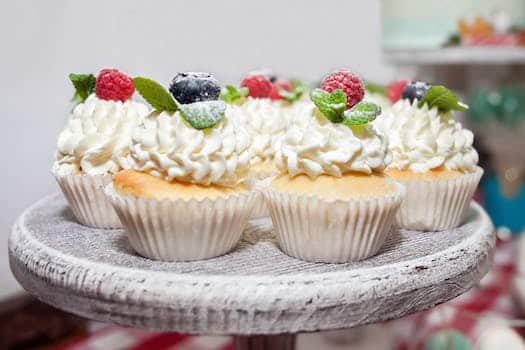Are you in search of a gluten-free dessert that won’t make you feel guilty? If you’re looking for a list of delicious vegan gluten-free dessert recipes, you can stop looking now.
- 1. 10 Delicious Vegan Gluten-Free Dessert Recipes
- 1.1. 1. Chocolate Avocado Mousse
- 1.2. 2. Vegan Gluten-Free Brownies
- 1.3. 3. No-Bake Vegan Gluten-Free Cheesecake
- 1.4. 4. Vegan Gluten-Free Apple Crisp
- 1.5. 5. Peanut Butter Banana Oatmeal Cookies
- 2. Ingredients to Use in Vegan Gluten-Free Desserts
- 2.1. 1. Non-Dairy Milk
- 2.2. 2. Nut Butters
- 2.3. 3. Coconut Sugar
- 2.4. 4. Gluten-Free Flours
- 2.5. 5. Flaxseed Meal
- 3. Tips for Baking Vegan Gluten-Free Desserts
1. 10 Delicious Vegan Gluten-Free Dessert Recipes
1. Vegan Gluten-Free Brownies
Ingredients:
– 1 cup gluten-free flour
– 1 cup coconut sugar
– 1/2 cup cocoa powder
– 1/2 teaspoon salt
– 1/2 cup vegan butter, melted
– 1/2 cup unsweetened applesauce
– 1 teaspoon vanilla extract
– 1/2 cup vegan chocolate chips
Instructions:
1. Preheat oven to 350°F.
2. In a large mixing bowl, whisk together flour, sugar, cocoa powder, and salt.
3. Add melted vegan butter, applesauce, and vanilla extract, and mix until well combined.
4. Fold in vegan chocolate chips.
5. Pour batter into a greased 8×8-inch baking pan.
6. Bake for 25-30 minutes.
7. Let cool before slicing and serving.
2. Vegan Gluten-Free Chocolate Chip Cookies
Ingredients:
– 2 cups gluten-free flour
– 1 teaspoon baking powder
– 1/2 teaspoon baking soda
– 1/2 teaspoon salt
– 1/2 cup vegan butter, softened
– 1/2 cup coconut sugar
– 1/4 cup pure maple syrup
– 1 teaspoon vanilla extract
– 1/2 cup vegan chocolate chips
Instructions:
1. Preheat oven to 350°F.
2. In a mixing bowl, whisk together flour, baking powder, baking soda, and salt.
3. In a separate mixing bowl, beat together vegan butter, coconut sugar, maple syrup, and vanilla extract until creamy.
4. Gradually mix in flour mixture until well combined.
5. Fold in vegan chocolate chips.
6. Drop spoonfuls of batter onto a greased baking sheet.
7. Bake for 10-12 minutes.
8. Let cool before serving.
3. Vegan Gluten-Free Apple Crisp
Ingredients:
– 4 cups thinly sliced apples
– 1/2 cup gluten-free flour
– 1/2 cup rolled oats
– 1/2 cup brown sugar
– 1/2 teaspoon cinnamon
– 1/4 teaspoon nutmeg
– 1/4 teaspoon salt
– 1/2 cup vegan butter, melted
Instructions:
1. Preheat oven to 375°F.
2. In a mixing bowl, toss together sliced apples and flour.
3. In a separate mixing bowl, mix together oats, brown sugar, cinnamon, nutmeg, salt, and melted vegan butter.
4. Layer sliced apples in a greased baking dish.
5. Sprinkle oat mixture over apples.
6. Bake for 35-40 minutes.
7. Let cool before serving.
4. Vegan Gluten-Free Peanut Butter Cupcakes
Ingredients:
– 1 cup gluten-free flour
– 1/2 cup coconut sugar
– 1/2 cup creamy peanut butter
– 1/2 cup unsweetened applesauce
– 1 teaspoon baking powder
– 1/2 teaspoon baking soda
– 1/2 teaspoon salt
– 1 teaspoon vanilla extract
Instructions:
1. Preheat oven to 350°F.
2. In a mixing bowl, whisk together flour, sugar, baking powder, baking soda, and salt.
3. In a separate mixing bowl, beat together peanut butter, applesauce, and vanilla extract until creamy.
4. Gradually mix in flour mixture until well combined.
5. Pour batter into a greased muffin tin.
6. Bake for 20-25 minutes.
7. Let cool before frosting.
5. Vegan Gluten-Free Chocolate Mousse
Ingredients:
– 1 can full-fat coconut milk
– 1/2 cup vegan chocolate chips
– 1 tablespoon pure maple syrup
– 1 teaspoon vanilla extract
Instructions:
1. Chill can of coconut milk in the refrigerator overnight.
2. Scoop out the solidified coconut cream from the top of the can and transfer to a mixing bowl.
3. In a double boiler, melt together chocolate chips, maple syrup, and vanilla extract.
4. Pour melted chocolate mixture into coconut cream and beat until well combined.
5. Chill in the refrigerator for at least an hour before serving.
6. Vegan Gluten-Free Blueberry Muffins
Ingredients:
– 2 cups gluten-free flour
– 1/2 cup coconut sugar
– 1/2 cup unsweetened applesauce
– 1/2 cup almond milk
– 1/4 cup coconut oil, melted
– 1 teaspoon baking powder
– 1/2 teaspoon baking soda
– 1/2 teaspoon salt
– 1 teaspoon vanilla extract
– 1 cup fresh blueberries
Instructions:
1. Preheat oven to 375°F.
2. In a mixing bowl, whisk together flour, sugar, baking powder, baking soda, and salt.
3. In a separate mixing bowl, mix together applesauce, almond milk, coconut oil, and vanilla extract.
4. Gradually mix in flour mixture until well combined.
5. Fold in fresh blueberries.
6. Pour batter into a greased muffin tin.
7. Bake for 20-25 minutes.
8. Let cool before serving.
7. Vegan Gluten-Free Banana Bread
Ingredients:
– 2 cups gluten-free flour
– 1/2 cup coconut sugar
– 1 teaspoon baking soda
– 1/2 teaspoon salt
– 1/4 cup vegan butter, melted
– 1/4 cup unsweetened applesauce
– 3 ripe bananas, mashed
– 1 teaspoon vanilla extract
Instructions:
1. Preheat oven to 350°F.
2. In a mixing bowl, whisk together flour, sugar, baking soda, and salt.
3. In a separate mixing bowl, mix together melted vegan butter, applesauce, mashed bananas, and vanilla extract.
4. Gradually mix in flour mixture until well combined.
5. Pour batter into a greased loaf pan.
6. Bake for 50-60 minutes.
7. Let cool before slicing.
8. Vegan Gluten-Free Lemon Bars
Ingredients:
– 1 cup gluten-free flour
– 1/4 cup coconut sugar
– 1/4 cup vegan butter, softened
– 1/4 teaspoon salt
– 2 tablespoons cornstarch
– 1/2 cup freshly squeezed lemon juice
– 1/2 cup pure maple syrup
– 1/4 cup unsweetened applesauce
– 1 teaspoon vanilla extract
Instructions:
1. Preheat oven to 350°F.
2. In a mixing bowl, whisk together flour, sugar, vegan butter, and salt until crumbly.
3. Press mixture into a greased 8×8-inch baking dish.
4. Bake for 15 minutes.
5. In a separate mixing bowl, whisk together cornstarch, lemon juice, maple syrup, applesauce, and vanilla extract.
6. Pour mixture over baked crust.
7. Bake for an additional 15-20 minutes.
8. Let cool before slicing.
9. Vegan Gluten-Free Carrot Cake
Ingredients:
– 2 cups gluten-free flour
– 2 teaspoons baking powder
– 1 teaspoon baking soda
– 1/2 teaspoon salt
– 1/2 cup vegan butter, softened
– 1/2 cup coconut sugar
– 1/4 cup pure maple syrup
– 1/2 cup unsweetened applesauce
– 1 teaspoon vanilla extract
– 1 cup grated carrots
– 1 teaspoon ground cinnamon
– 1/2 teaspoon ground ginger
Instructions:
1. Preheat oven to 350°F.
2. In a mixing bowl, whisk together flour, baking powder, baking soda, and salt.
3. In a separate mixing bowl, beat together vegan butter, coconut sugar, maple syrup, applesauce, and vanilla extract until creamy.
4. Gradually mix in flour mixture until well combined.
5. Fold in grated carrots, cinnamon, and ginger.
6. Pour batter into a greased cake pan.
7. Bake for 30-35 minutes.
8. Let cool before frosting.
10. Vegan Gluten-Free Raspberry Cheesecake Bars
Ingredients:
– 1 cup gluten-free flour
– 1/4 cup coconut sugar
– 1/4 cup vegan butter, softened
– 1/4 teaspoon salt
– 2 cups raw cashews, soaked overnight
– 1/2 cup coconut cream
– 1/2 cup pure maple syrup
– 1/4 cup freshly squeezed lemon juice
– 1 teaspoon vanilla extract
– 1 cup fresh raspberries
Instructions:
1. Preheat oven to 350°F.
2. In a mixing bowl, whisk together flour, sugar, vegan butter, and salt until crumbly.
3. Press mixture into a greased 8×8-inch baking dish.
4. Bake for 15 minutes.
5. In a blender, blend together soaked cashews, coconut cream, maple syrup, lemon juice, and vanilla extract until smooth.
6. Pour mixture over baked crust.
7. Drop spoonfuls of raspberry puree over cashew mixture.
8. Use a toothpick to swirl raspberry puree into cashew mixture.
9. Bake for an additional 25-30 minutes.
10. Let cool before slicing.
1.1. 1. Chocolate Avocado Mousse
Vegan and gluten-free, this Chocolate Avocado Mousse is a luxurious dessert. The avocado and chocolate produce a velvety, decadent texture, and the use of all-natural sweeteners like maple syrup or agave makes this mousse a more sensible dessert option. Simply combine the avocado, cocoa powder, sweetener, and a pinch of vanilla essence in a blender and process until smooth. Add some texture and flavor by topping it with fresh berries or chopped almonds. You may indulge your sweet taste without feeling guilty with this dish.
1.2. 2. Vegan Gluten-Free Brownies
Finding a satisfying sweet treat when you have dietary limitations might be difficult. These brownies are a game-changer because they are both vegan and gluten-free. These brownies are made without the use of any refined sugars or dairy products, yet they nevertheless manage to be decadent. They’re simple to prepare and appropriate for any event. The perfect dessert is a warm serving with a dollop of vegan ice cream.
1.3. 3. No-Bake Vegan Gluten-Free Cheesecake
If you’re seeking for a healthier and just as delicious dessert option, go no further than our No-Bake Vegan Gluten-Free Cheesecake. This gluten-free vegan cheesecake is made with cashews, coconut milk, and maple syrup and has a thick, creamy texture. What’s even better? It doesn’t need to be baked, so you may have it right away. The recipe is as follows:
1.4. 4. Vegan Gluten-Free Apple Crisp
If you’re looking for a delicious dessert but have dietary limitations, this vegan gluten-free apple crisp is the way to go. This apple crisp is not only gluten-free, but also vegan, thanks to its use of almond flour, maple syrup, coconut oil, and oats. Your craving for anything sweet will be completely satiated by the combination of sour apples, spicy cinnamon, and crisp topping. Served warm with a dollop of vegan ice cream, this dessert is pure bliss.
2. Ingredients to Use in Vegan Gluten-Free Desserts
There is a wide variety of ingredients available that may be used to create delicious vegan gluten-free desserts that will still allow you to indulge your sweet appetite. Almond flour, coconut flour, gluten-free oats, flaxseed meal, chia seeds, coconut oil, and non-dairy milk are some of the most commonly used components in vegan gluten-free desserts. Delicious baked goods like cookies, cakes, muffins, and more can be made with these elements. Try out several ingredient combinations until you find the one that yields the best vegan gluten-free sweet treat!
2.1. 1. Non-Dairy Milk
Non-dairy milk is an excellent addition to vegan and gluten-free sweets. It’s a great alternative to whole milk, and it gives baked goods a distinctive flavor and texture all their own. Almond milk, coconut milk, oat milk, and soy milk are some of the best alternatives to dairy milk. You can improve the flavor of your sweets by using one of these milks, each of which has its own unique texture and taste. Try out various kinds of dairy-free milk until you find one that works well with your next gluten-free dessert.
2.2. 2. Nut Butters
If you’re trying to watch your carb intake and keep your weight in check, low-carb snacks are a fantastic choice. Avoid energy slumps and hunger pangs caused by high-carb snacks by opting instead for low-carb alternatives. In addition to keeping you full for longer and giving you energy that lasts, low-carb snacks are often strong in protein and healthy fats. In general, picking low-carb snacks is a great way to satisfy your snacking needs without derailing your health and fitness plans.
2.3. 3. Coconut Sugar
Many people who try to eat healthily fall off the wagon because they find it inconvenient to do so. If you’re on the run and feeling hungry, grab a low-carb snack to curb your appetite. Whether you’re in a rush in the morning or need a pick-me-up in the middle of the afternoon, keeping a variety of easily transportable snacks on hand will help you maintain your energy and concentration. This post will discuss 10 simple low-carb snacks that can be taken with you everywhere, helping you to maintain your health and fitness regimen on the road.
2.4. 4. Gluten-Free Flours
The key to making tasty vegan gluten-free desserts is using the appropriate flours. There are numerous gluten-free flours on the market that can be used successfully in vegan baking. To make delicious vegan gluten-free sweets, use these four gluten-free flours:
One of the best gluten-free flours to use in vegan baking is almond flour, which gives baked goods a nutty flavor and a moist texture. You may use it to make everything from breads and muffins to cakes and cookies.
The second gluten-free flour that works well in vegan baking is coconut flour. Its mild sweetness and airy texture make it ideal for baking sweet treats like cakes and biscuits. Those watching their carbohydrate consumption will like that it is high in fiber and somewhat low in carbs.
Thirdly, Rice Flour – Rice flour is a gluten-free flour that may be utilized in many different vegan dessert recipes. It’s perfect for gluten-free baking because of its mild flavor and fluffy texture.
Flour made from buckwheat is gluten-free and has a solid texture and a mildly nutty flavor. Use it in pancake, waffle, and muffin recipes that call for a robust flour and yet adhere to a vegan, gluten-free diet. The high levels of protein and fiber in this food make it a good option for dietary supplementation.
2.5. 5. Flaxseed Meal
When making vegan, gluten-free sweets, flaxseed meal is a fantastic ingredient to utilize. It’s a nutritious addition because of the fiber and protein it contains, but it also makes the dish taste nutty and keeps everything together. It can be used in place of eggs, which is especially useful for vegan bakers. For a crunchy and nutritious topping, flaxseed meal can be sprinkled over baked goods.
3. Tips for Baking Vegan Gluten-Free Desserts
Snacking on a low-carb diet can be difficult because it’s hard to find options that are both enjoyable and easy to prepare. Low-carb snacks can be hard to find, but with enough forethought and preparation, you can find many tasty options. Here are 10 simple, low-carb snacks that can keep you going all day long:
3.1. 1. Measure Ingredients Carefully
Careful ingredient weighing and measuring is required when making vegan gluten-free sweets. Vegan and gluten-free baked items necessitate more precise measurements than regular baked goods. This is because the texture and structure of your sweets can be drastically altered without the use of eggs and gluten. Use appropriate measuring tools, such as spoons and cups, to ensure you receive the correct amount of each ingredient. In order to guarantee that your dry ingredients are thoroughly combined and fluffy, sifting them is a must. If you follow these guidelines, your vegan gluten-free desserts will taste great and have the right consistency every time.
3.2. 2. Use Xanthan Gum or Chia Seeds as a Binder
Remote teams may now interact and collaborate effectively thanks to collaboration tools. Using collaborative software has many advantages, including the following:
The first benefit of using collaboration software is better communication among team members. This ensures that there are no surprises and that no one is left in the dark.
Second, it boosts productivity since the software makes it simpler for employees to collaborate on projects and finish them on time. The result is higher output in the long run.
Third, greater adaptability, because working across time zones can be challenging for remote teams. Using collaboration software, team members can contribute to a project even when they can’t devote as much time to it as others.
Fourth, increased openness: with a single hub for all project-related data, team members can quickly and easily find and share the files they need. This aids in avoiding misunderstandings by making sure everyone is on the same page.
5. Reduced expenses: With the help of collaboration software, you won’t have to spend as much money on things like travel or renting an office. As a result, businesses may be able to save a lot of money.
3.3. 3. Don’t Overmix Batter
Improved communication and teamwork is a primary perk of collaboration software for distributed teams. Team members in different locations can effortlessly communicate with one another thanks to these technologies. This allows them to collaborate in real time on ideas, initiatives, and comments. The ability to access shared files and documents from several locations is a major benefit of collaboration software for distributed teams. As a result, team members are able to work together more effectively, leading to improved collaboration and higher output.
3.4. 4. Use Coconut Oil or Vegan Butter in Place of Butter
Productivity and efficiency for distributed teams can be greatly improved with the help of collaboration tools. Team members can simply stay connected and on top of their work with tools like real-time communication, file sharing, and task management. Team members in different locations and/or on different time zones can work together effectively thanks to collaboration tools. As a result, tasks can be finished more quickly and with less misunderstanding, resulting in higher production. Moreover, collaboration tools can assist distributed teams maintain discipline and productivity. Team members may always know where they stand in relation to project goals and deadlines with collaborative tools like shared calendars, to-do lists, and progress tracking. When it comes to maximizing productivity and efficiency, remote teams cannot function without collaboration software.
3.5. 5. Let Baked Goods Cool Completely Before Removing from Pan
The use of remote teams has been greatly improved by collaboration tools. One of the main advantages of adopting collaboration software for remote teams is improved project management. Collaboration software makes it simple for groups to coordinate their efforts, share information, and monitor tasks. This facilitates the management of projects, the allocation of responsibilities, and the consolidation of knowledge among team members. Team members, no matter where they are physically situated, can collaborate on projects in real time thanks to collaboration software. This has the potential to hasten the end of projects and increase output. Furthermore, distant teams typically struggle with communication, but this is another area where collaboration software may help. Collaboration software helps distributed teams stay on the same page and focused on the same objectives.
Conclusion
Collaboration software for distributed teams must allow for a high degree of customization and flexibility. It’s crucial that the program may be accessed and used regardless of location or time zone, as team members will be spread out around the globe. The software should also be customizable to meet the specific requirements of each team member for optimal efficiency and effectiveness. Distributed teams can maximize the efficacy of their collaboration software by giving special attention to its adaptability and versatility.





